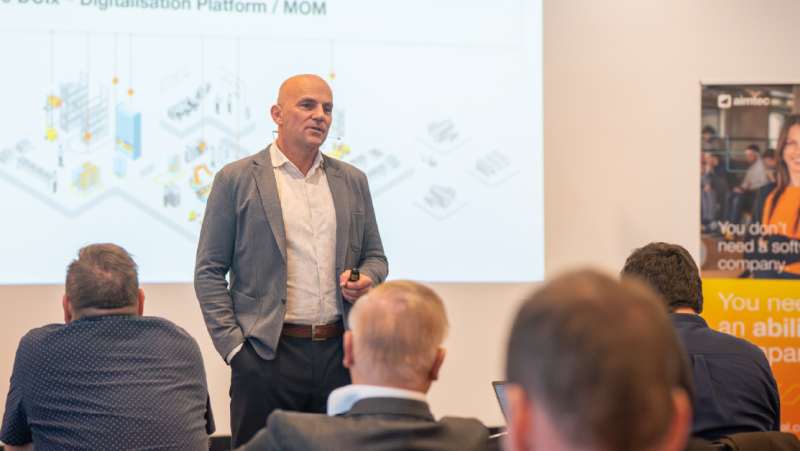Future of Planning from the Perspective of Industry 4.0
- Digital Factory
- Article
With respect to the implementation of information systems, production companies can currently be divided into two basic groups. The first group implements tested solutions, having a clear beginning, end, objective, and benefit. The second group includes so called “disruptors”, using the most up-to-date systems, and changing their complex implementation to own benefits. Such a system can be an APS solution applying artificial intelligence connecting IoT (Internet of Things) elements.
Let us focus on the latter group in more detail. It includes computer systems using adaptive controllers, optimizing methods, statistics, or other advanced evaluation methods. Namely, APS systems can be mentioned, being often the only information systems in companies, belonging to this category. The software infrastructure in an advanced production company consists of several transaction systems (MES, WMS, attendance system), main ERP system and several computer systems supporting advanced evaluations – forecasting SW, and APS systems.
APS as the adaptive system towards the environment
Mostly, the APS systems are set as a transaction system with invariable parameters. Such a state does not correspond with capabilities of the given branch. APS systems play a role of a control and executive centre between the executive layer of the company (MES, WMS, FI, HR), and “the data central” (ERP system). This implies, their current
behaviour is to be refined with changing planning parameters according to the current consistency of available input data (state of inventory, customer requirements, capacity of machine and human resources). Thus, the APS system is a living organism, which can be compared in its behaviour to a living being adapting to the surrounding environment. The adaptation of the APS system proceeds continuously using dynamic values, which must be administered in a regular cycle. This operative approach requires perfect understanding of the environment, where the operating personnel is acting. If there is such a user in the production company, it is the first step for successful usage of higher level systems. Advanced evaluation tools are then really involved in the decision system of the company, surrounded by the central brain (ERP system), and executive.
Digitization from the perspective of planning
In the light of Industry 4.0 and IoT, let us move a bit further. Data for accurate decision making and optimization calculations are available already. Automation and digitization from the perspective of planning are feasible in several consecutive steps:
- Multi-level fuzzy logic – implementation of decision algorithms in the form of scenarios responding to emergent situations.
- Feedback control – a loop controlled by a control deviation of the value, and controlling itself based on defined model behaviour. The system behaviour is set as stable.
- Integer programming – the optimization will reflect the situation as a multi-dimensional level of values (load of capacity, delay, warehouse inventory, transport price, load of carriers etc.), to find local/global minimum values, which is often very computationally demanding. This approach reflects pre-defined situations within certain bounded criteria.
- Adaptive control with artificial intelligence elements – the first “dynamic” approach to the system control (of the production company) as a whole. It is based on the identification of system behaviour, which is used to set basic parameters.
Consequently, so called adaptive control takes place. When we record these historical situations, and determine connections in them, we move the stable state to so called self learning system. Production companies sometimes use the first level of evaluation scenarios – the fuzzy logic. And yet, results are noticeable at a glance:
- 24/7 plan autonomous response.
- Solution of collision situations in real time (issues of JIS/JIT planning).
- Error-free publication to all affected workplaces and sections.
If we move to the close future and use all four “self control” levels from the perspective of planning, we reach fully automated information structures without any need of human interventions. Personal occupation then moves from the executive position to the position of inspection and maintenance of the system.
Share article
Top stories from logistics, production and IT.
Subscribe to Aimtec Insights
By registering, you agree to the processing of your personal data by Aimtec as described in the Privacy policy.
Get top stories and articles
from Logistics, Production and IT.
Subscribe to Aimtec Insights
By registering, you agree to the processing of your personal data by Aimtec as described in the Privacy policy.







